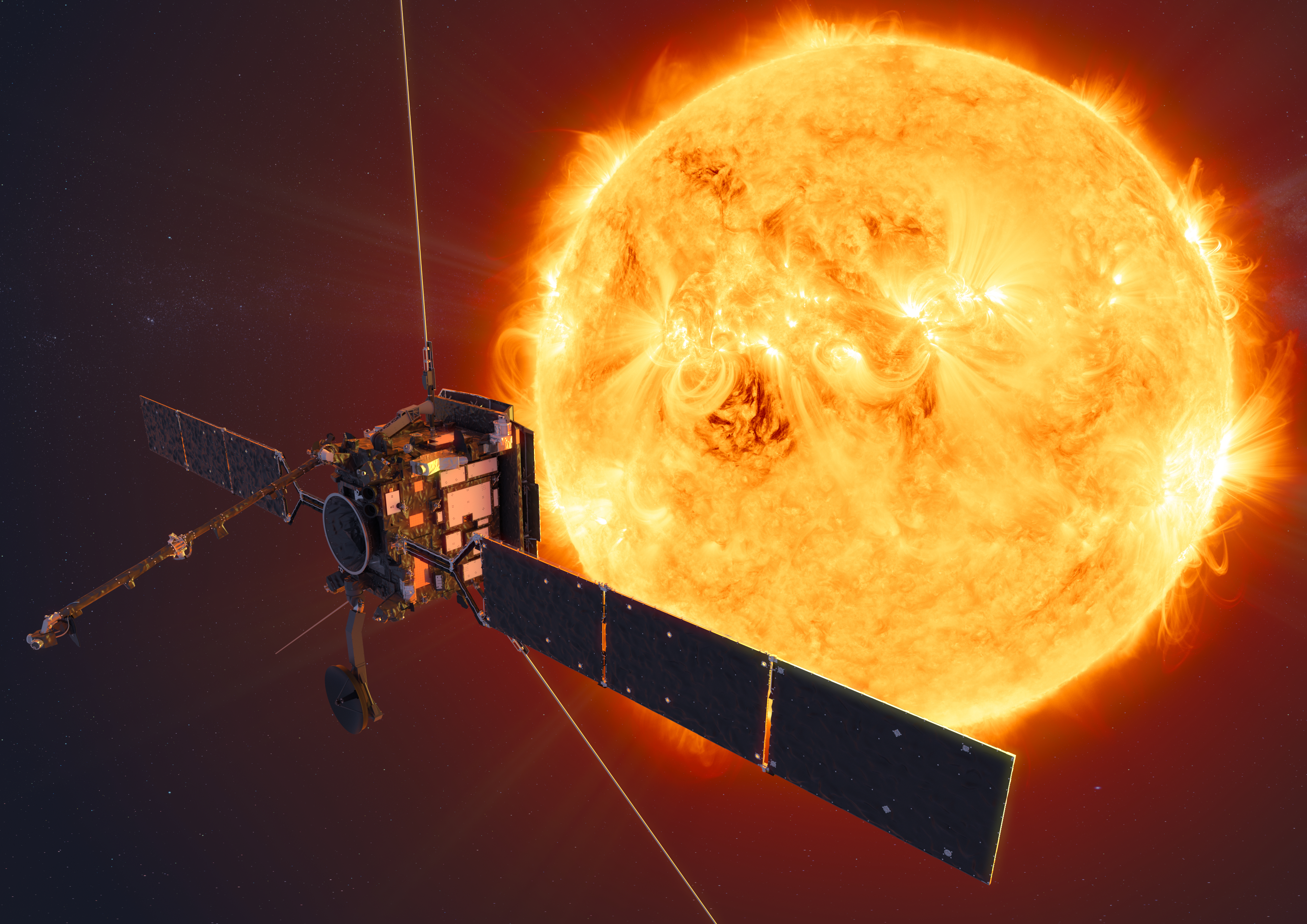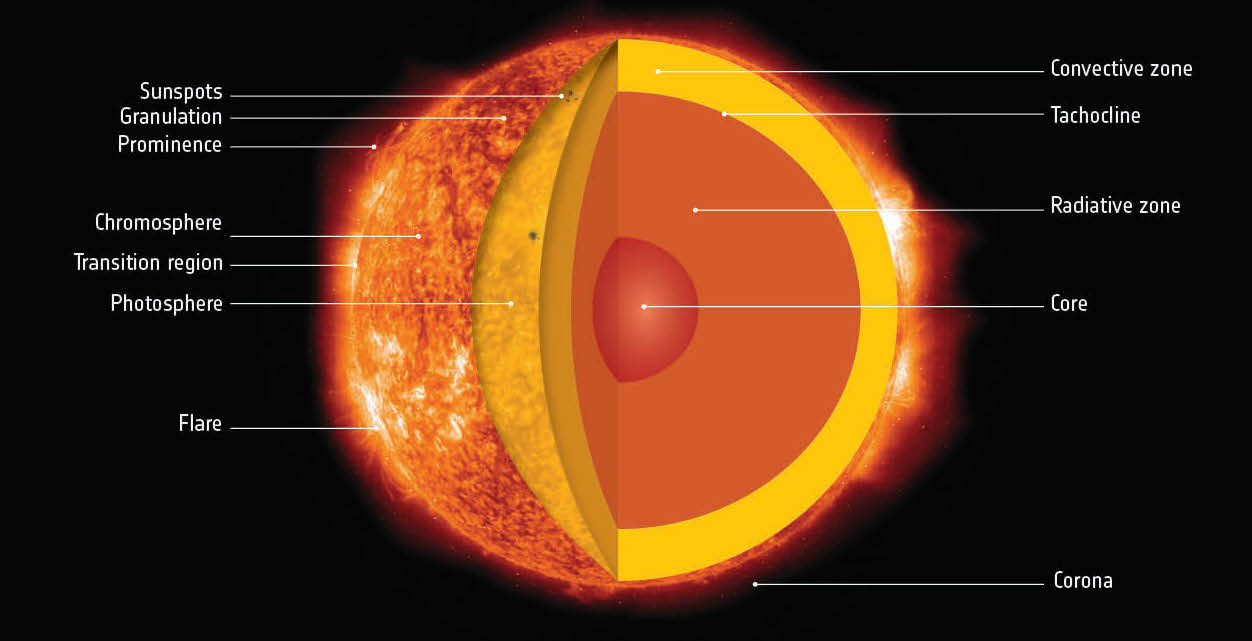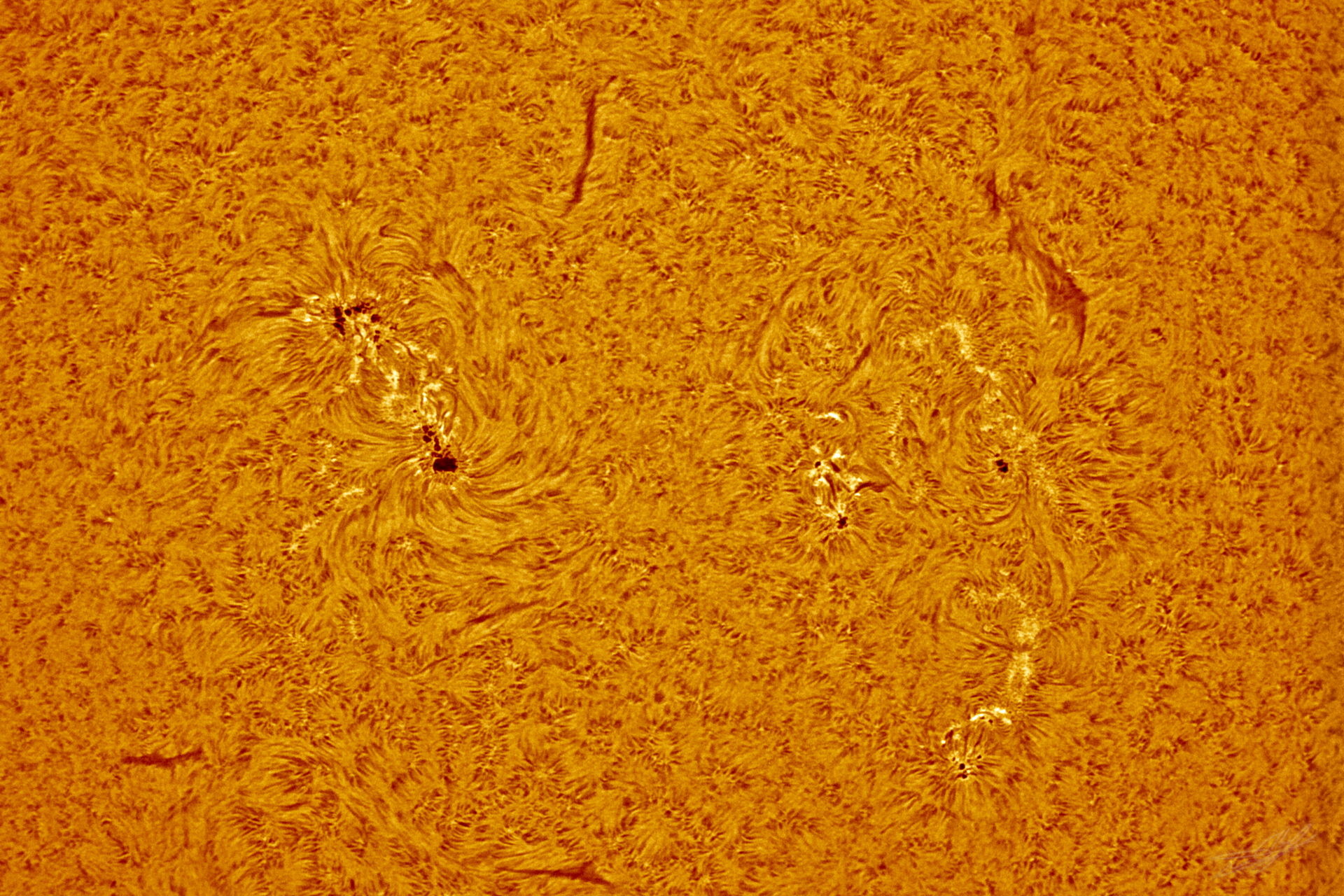ESA’s Solar Orbiter mission gets ready to investigate the Sun up close!

Solar Orbiter will investigate our closest star, the Sun. Copyright: ESA/ATG medialab
28 January 2020
When was the last time you saw the Sun in the sky? It is such a common sight that it can be easy to forget that the Sun is a strange place full of mysteries! Vital for life on Earth, but difficult to study because of its heat and brightness, the Sun is the target of a new ambitious mission that ESA are preparing to launch to unveil our star’s secrets. Called Solar Orbiter, it is set to blast off from Kennedy Space Center in the USA on 5/6 February! Although the mission is led by ESA, NASA have also been strongly involved and the spacecraft will launch on one of NASA’s Atlas V 411 rockets.
Solar Orbiter is designed to operate near to the Sun, at just over one-quarter of the distance that Earth is from the Sun. Being so close means Solar Orbiter will experience sunlight 13 times more intense than what we feel on Earth! Even more dangerous are powerful bursts of atomic particles blasted out from explosions in the Sun’s atmosphere, which will impact the robotic explorer. This mission is far too difficult and dangerous for human astronauts, but Solar Orbiter has been built specially for these tasks! To keep cool, Solar Orbiter has a sunshield to give it protection from the full intensity of the Sun and radiators that pass heat from the probe back out into space. It also uses technology such as special solar arrays that ESA engineers first developed for the BepiColumbo mission to Mercury!
Getting so close to the Sun is essential for Solar Orbiter to complete its mission. It will give us the first ever views of the uncharted top and bottom of the Sun, as well as investigating connections between the Sun and Earth. This will help us to predict stormy space weather, which can affect our home planet. Braving the heat will even allow Solar Orbiter to study a mysterious area near the Sun called the inner-heliosphere.
Solar Orbiter will be looking out for storms forming on the Sun, and will be able to watch these for many days, allowing us to see how they develop over time. Scientists are particularly excited by the photos that Solar Orbiter will take and send back to Earth. These will give incredible close-up views of glowing gas loops as small as 180 km-across – tiny compared to the entire Sun!

Building a space probe to withstand the Sun’s heat, light, and radiation was a difficult task! Copyright: ESA/ATG medialab
Solar Orbiter’s upcoming launch is just the beginning of the mission. Its “cruise phase” to the Sun will last three years and includes the probe swinging by both Venus and Earth, using their gravity to adjust its path and propel it onward. Solar Orbiter’s instruments will be tested during this time, gathering measurements that will be of interest to scientists even before it reaches the Sun!
Cool fact: Parts of Solar Orbiter facing the Sun will have to withstand temperatures up to 500°C.






